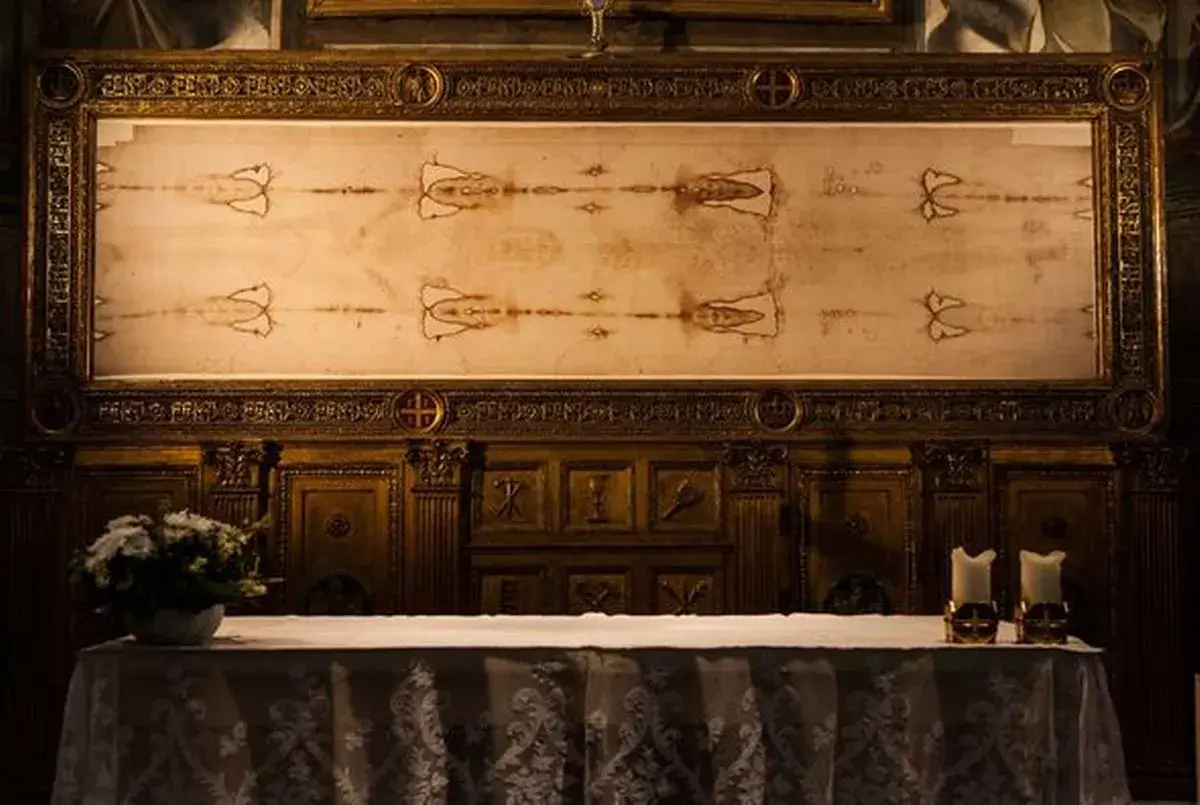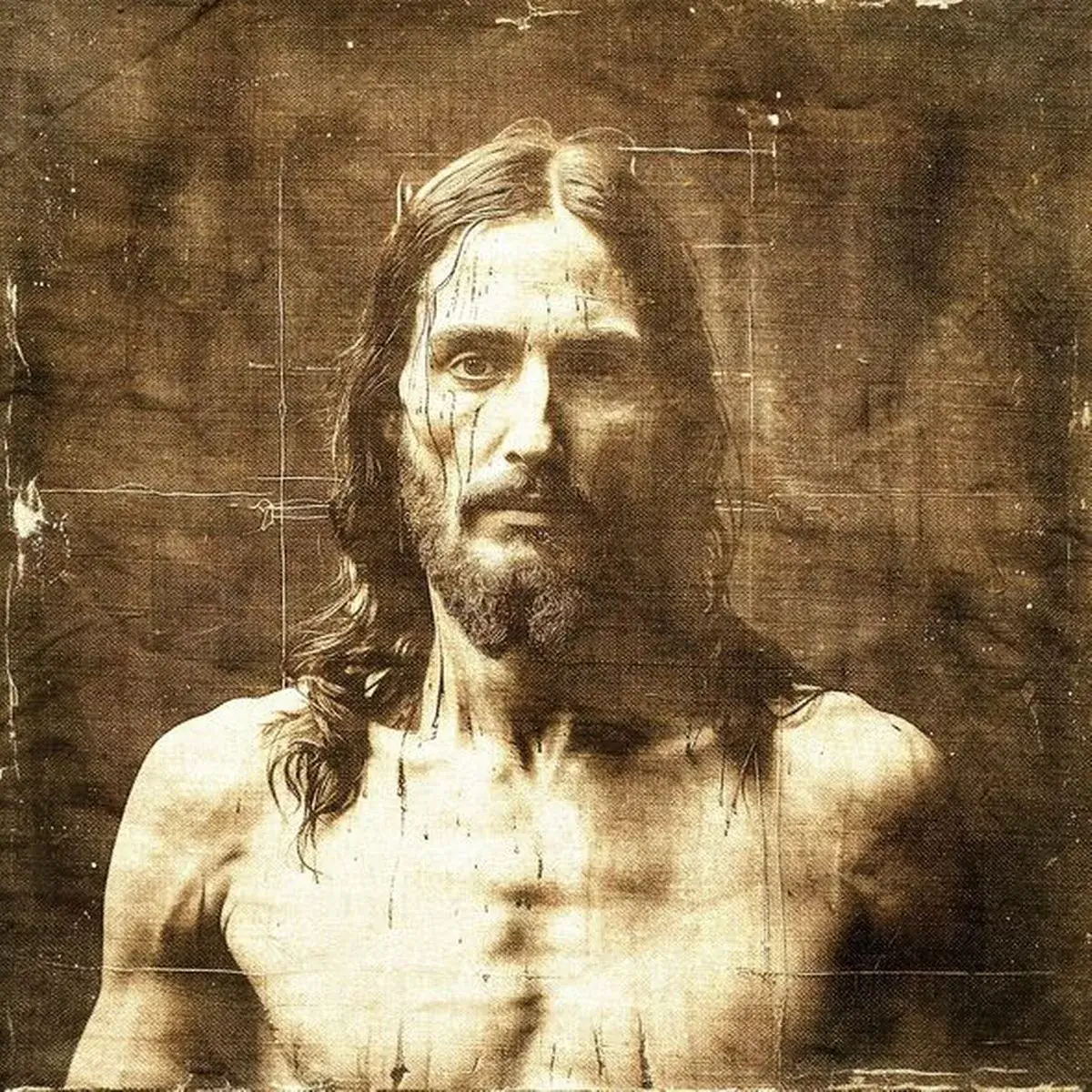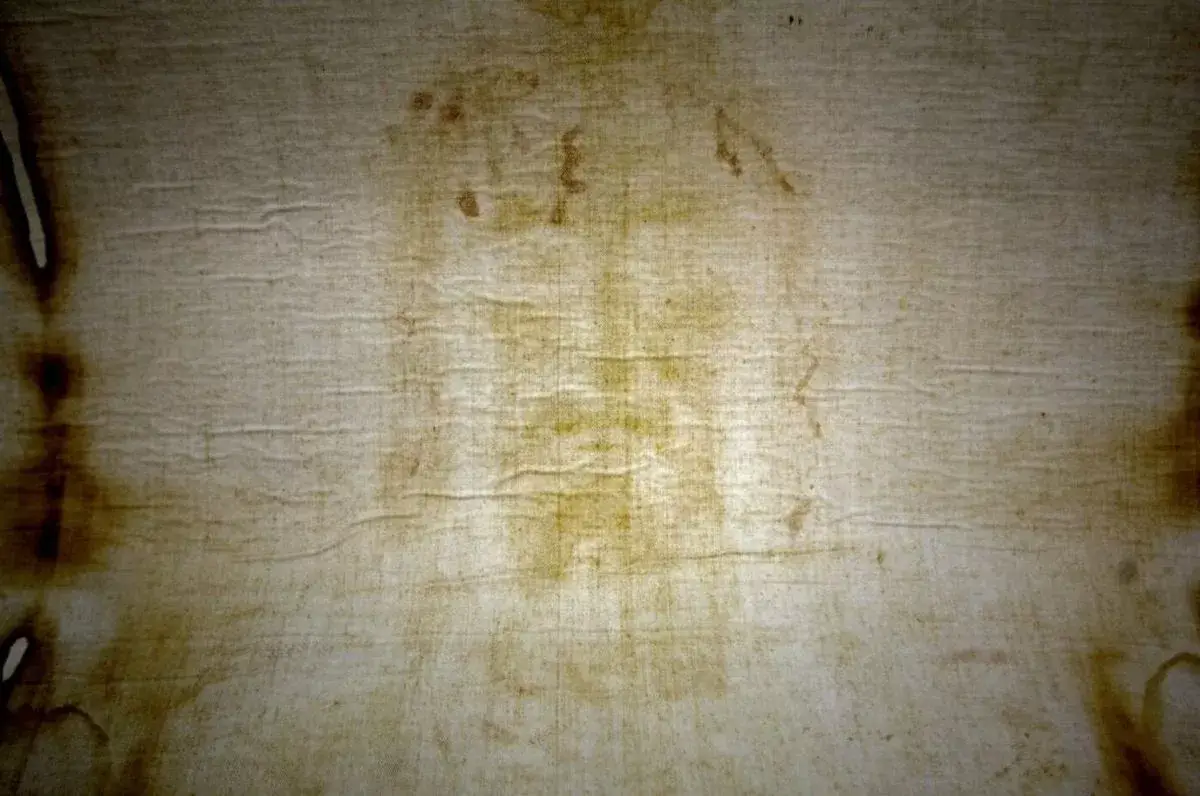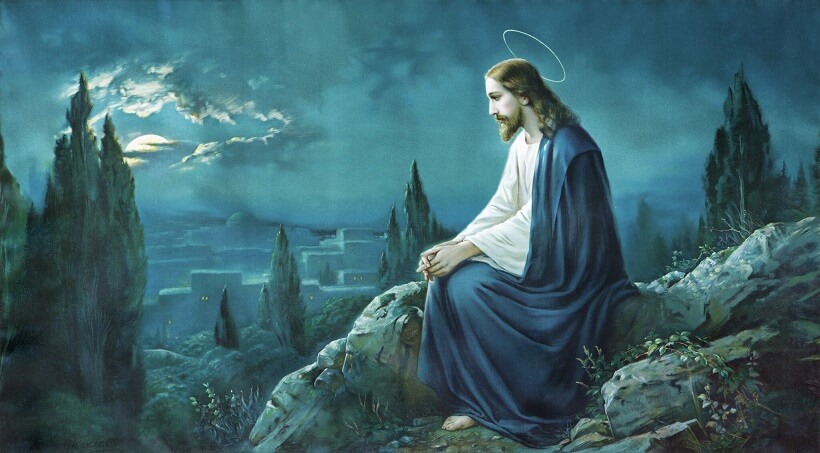
AI Unveils ‘Face of Jesus Christ’ Using Turin Shroud After Bombshell Discovery
The Shroud of Turin has been imaged by AI in a bid to work out what Jesus would have looked like. It is said to have been used to wrap Jesus after his Crucifixion
By: Michael Moran | Daily Star
Artificial intelligence has imagined the “face of Jesus Christ” from a cloth believed by some to have covered his body immediately after the Crucifixion.
The Shroud of Turin has long sparked debate, with supporters insisting they can see Christ’s visage imprinted on the fabric, while critics slam it as a medieval hoax. However, Italian scientists, using new technology, now reckon the 14-foot-long cloth could have originated from Jesus’ time.
AI has since been used to unveil the “true face of Jesus“. The Daily Express used Midjourney to conjure up a simulation of who many believe to be the man behind the shroud.

The generated snaps seem to portray Jesus sporting traditional long hair and a beard, complete with wounds that suggest he had just suffered his fatal ordeal.
Critics say a 14th Century artist may have forged the “shroud of the Messiah” using powdered pigment on a sculpture or a live model. But heaps of Catholics are certain the fabric captured Christ’s likeness in the throes of resurrection.
Back in the 1908s, carbon-dating tests pegged the shroud’s origins to the 1300s, right around when its recorded history kicks off.

But Dr. Liberato de Caro used new technology known as Wide-Angle X-ray Scattering to claim the ancient old fabric closely matches a sample from Masada’s famous siege back in 55-74 AD.
The expert has cast doubt on the previous carbon dating, writing: “Moulds and bacteria, colonising textile fibres, and dirt or carbon-containing minerals, such as limestone, adhering to them in the empty spaces between the fibres that at a microscopic level represent about 50% of the volume, can be so difficult to completely eliminate in the sample cleaning phase, which can distort the dating.”
He points out that his X-ray method doesn’t wreck the sample, giving boffins everywhere the chance to have a go and hopefully back up his bombshell findings.
De Caro points out that a number of pollen grains from plants native to the Middle East are embedded in the linen, dismissing the idea that it’s a European knock-off.

While solid proof of the Shroud’s existence before the mid-1300s is scarce, there have been suggestions that a very similar relic stolen from a Constantinople church a full century earlier might have been the same bit of kit.
The enigmatic Turin Shroud, imprinted with a spectral figure of a roughly six-foot-tall man marked by wounds that evoke images of whipping and crucifixion, fascinated the world upon its photographic capture at the end of the 19th Century. The camera revealed the obscure “scorch mark” as a stark and more striking negative image.
Throughout the years, various cynics have taken stabs at duplicating the image to varying degrees of success. Despite the dominant view skewing towards the artefact being the work of an untraceable hoaxer from the mid-14th Century, one must concede that such a craftsman possessed quite extraordinary, almost otherworldly, prowess.
Although the Vatican hasn’t reached a collective consensus on the legitimacy of the eerie relic, eminent figures within the Church, like Pope John Paul II and Pope Francis in 2013, have pronounced the Turin Shroud a miraculous artefact.
* * *
NEXT UP!
1500 Year Old Bible Claims Jesus Christ Was Not Crucified – Vatican In Awe
In a surprising turn of events, an ancient Bible dating back approximately 1500 to 2000 years has been discovered in Turkey, specifically in the Ethnography Museum of Ankara.
This remarkable find, known as the Gospel of Barnabas, has caused a stir within religious circles, particularly at the Vatican. The book, kept secret since its discovery in the year 2000, contains controversial assertions that challenge long-held beliefs about Jesus Christ, his crucifixion, and his divinity. This article explores the content of the ancient Bible, its alleged authenticity, and the implications it carries for traditional Christian teachings.
The Gospel of Barnabas
The Gospel of Barnabas, believed to have been written by the disciple Barnabas, presents an alternative narrative of Jesus’ life, diverging from the accounts found in the canonical Gospels. According to this ancient text, Jesus was not crucified, contrary to the widely accepted Christian belief.
* * *
Read more on Jesus Christ: Jesus Wasn’t White: He Was A Brown Skinned, Middle Eastern Jew. Here’s Why That Matters
Telegram: Stay connected and get the latest updates by following us on Telegram!
We’d love to hear from you! If you have a comment about this article or if you have a tip for a future Collective Spark Story please let us know below in the comment section.

